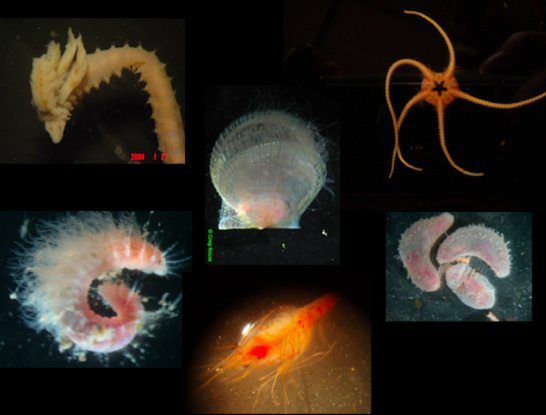Paul Illg Distinguished Lecturer, Dr. Lisa Levin
The Illg Distinguished Lectureship is presented in honor of Professor Paul L. Illg, who made many contributions to FHL as a scientist, teacher, mentor and friend. Paul excelled as a faculty member of the UW Zoology Department from 1952-1982. An expert in the biology of crustaceans, he participated in many summer sessions at FHL. He invited world-renowned scholars to FHL to join him in teaching invertebrate biology and thus greatly enhanced the quality of the graduate program and research at the Laboratories. The lectureship endowment was established through memorial gifts from Paul's family, friends and colleagues.
In August 2014, FHL had the pleasure of hosting Dr. Lisa Levin for the Paul Illg Distinguished Lectureship series, which coincided with our course on Deep Sea Biodiversity, Connectivity, and Ecosystem Function. Dr. Levin is a Distinguished Professor at the Scripps Institution of Oceanography in La Jolla, California and serves as Director of the Center for Marine Biodiversity and Conservation and as the SIO Biology Section Head.
She is a marine ecologist who studies benthic ecosystems in the deep sea and in shallow water, and has worked with a broad range of taxa from microbes and microalgae to invertebrates and fishes. Dr. Levin’s research has been conducted over the past 3 decades on the margins of the Pacific, Indian and Atlantic oceans using ships, submersibles, and remotely operated vehicles (ROVs) to sample and conduct experiments. She has participated in over 40 oceanographic expeditions around the world and served as Chief Scientist on about half of these. Her recent research has emphasized 3 major themes:
(1) the structure, function and vulnerability of continental margin ecosystems, particularly those subject to oxygen and sulfide stress;
(2) wetland biotic interactions as they mediate marsh function, invasion and restoration; and
(3) larval ecology of coastal marine populations with emphasis on connectivity and response to ocean acidification and deoxygenation.
**********************************************************
Lecture abstract: Oxygen and the Ecology of Upwelling Margins in a Changing Ocean
Persistent hypoxia (low oxygen) in the ocean alters both structural and functional aspects of benthic communities, with major consequences for ecosystems services at shallow and bathyal depths. Continental margins subject to upwelling exhibit strong gradients in oxygen, CO2, and temperature, and can serve as ideal natural laboratories for the study of environmental stressors. Several decades of study of open ocean oxygen minimum zones (OMZs) have revealed the massive influence of oxygen on benthic organism abundance, biomass, body size, species composition, species distributions, lifestyles, and biodiversity. Differing low-oxygen sensitivities exist among taxa as a function of phylogeny, body size, and exposure history, leading to very different oxygen thresholds and responses (Fig. 1). Functional consequences of the structural changes include shifts in trophic pathways and efficiency, enhanced roles for chemosynthesis, altered predator and prey encounter dynamics, changing pathways of carbon processing and burial, reduced ecosystem resilience, connectivity and a host of other emergent properties.
 Figure 1. Oxygen minimum zone (OMZ) invertebrates. Photo credit: Lisa A. Levine
Figure 1. Oxygen minimum zone (OMZ) invertebrates. Photo credit: Lisa A. LevineRising levels of CO2 in the atmosphere leads to warmer, more stratified oceans and reduced ventilation, but also to altered circulation and intensified upwelling along eastern Boundary Currents, causing expansion of the world’s oxygen minimum zones. As a result, upwelling margins are experiencing increased coastal hypoxia and hypercapnia (high CO2). However, the strong natural variability of O2 and CO2 on multiple time scales poses a challenge for understanding population and ecosystem responses to OMZ expansion. A number of approaches exist for resolving the effects of declining oxygen and pH on margin ecosystems and their services. Examples include the use of natural environmental gradients, laboratory manipulations, geochemical proxies, and time series data. Scientists today are faced with a need to integrate the influence of natural variability, climate-driven change, and direct human activities in management of continental margin ecosystems and resources. The U.S. west coast is increasingly becoming a testbed for ways to address this challenge.



